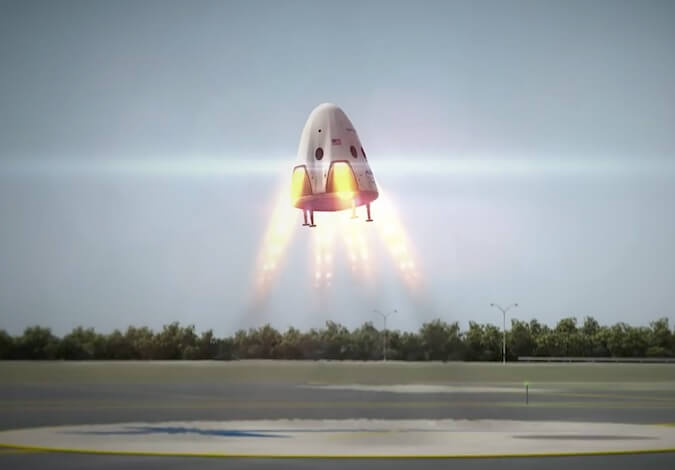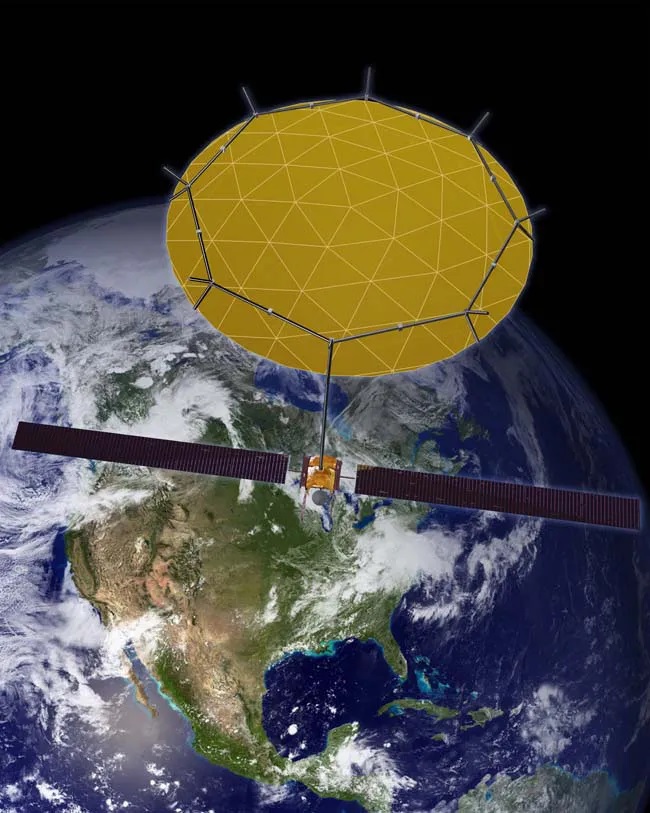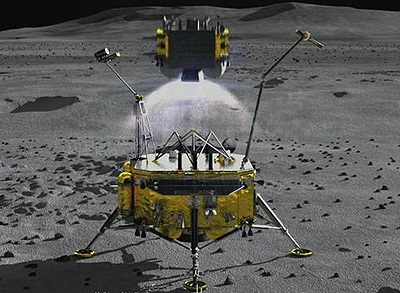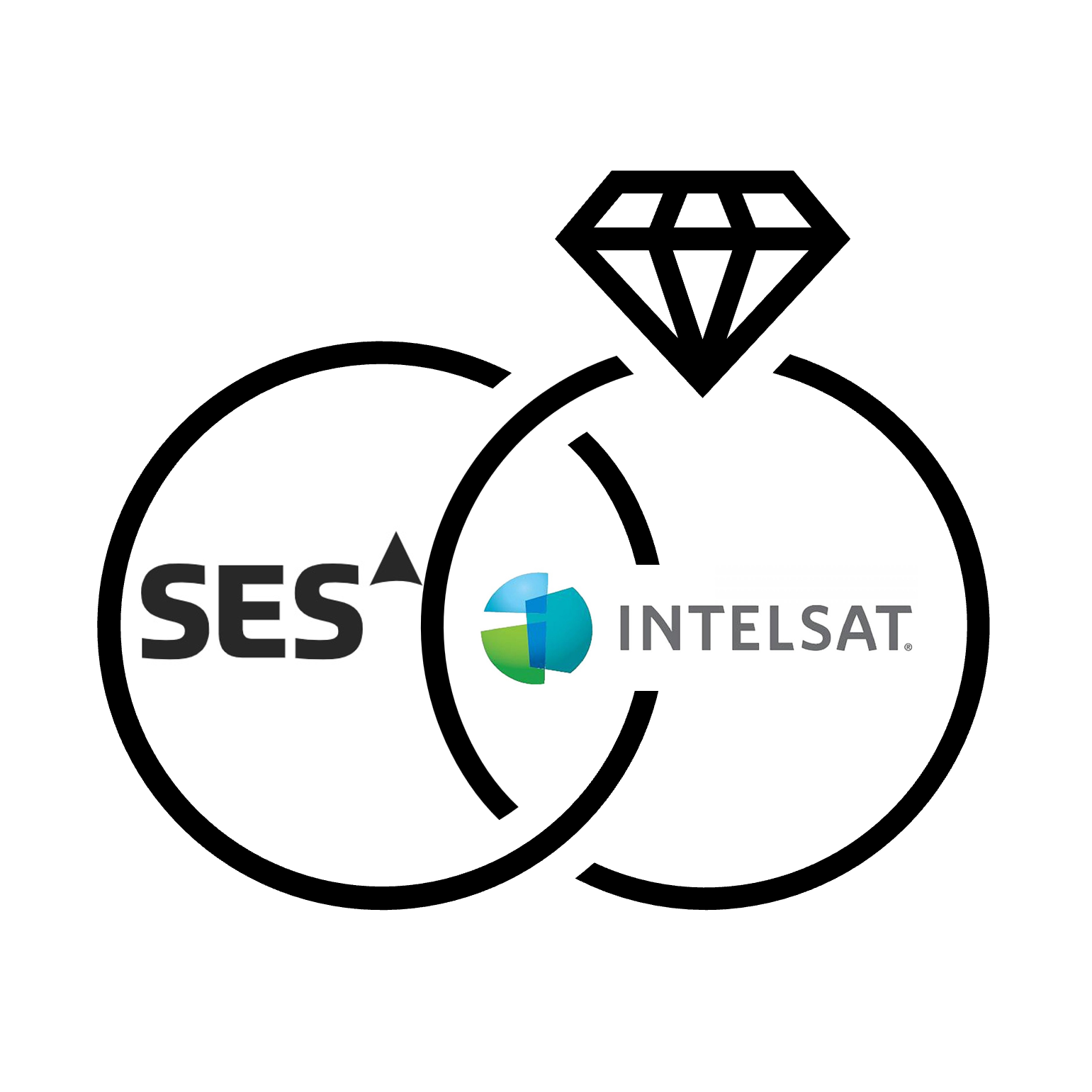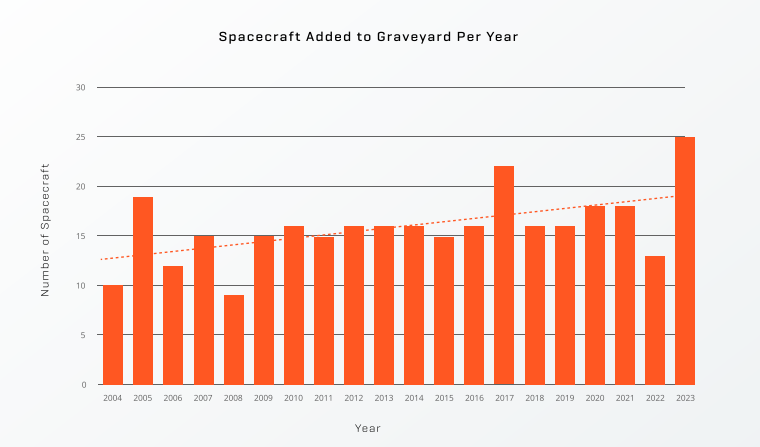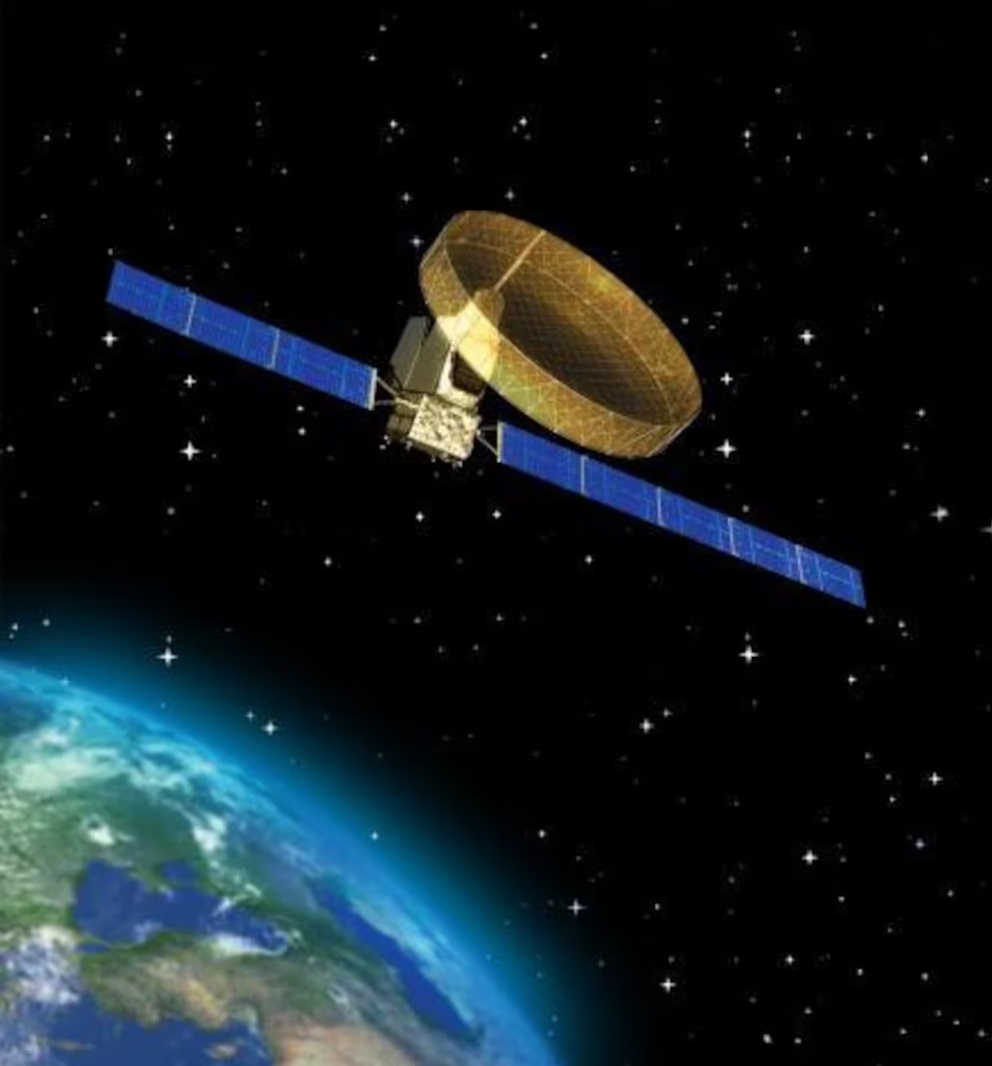Elon Musk, billionaire founder of SpaceX (and Tesla cars), has apparently backtracked on a promise to provide a Dragon manned space vehicle capable of making propulsive vertical landings on Earth. Speaking at the International Space Station Research and Development (ISSR&D) Conference in Washington DC, he said a simpler parachute splashdown landing system was being developed, which might later morph into an on-land version using parachutes with either airbags or a last second propulsive breaking technique, similar to that used by Soyuz capsules.
While initial versions of the manned “Crew Dragon” spacecraft were always going to use a parachute landing/ocean splashdown technique, later ones were to use the “SuperDraco” reward facing thrusters with landing legs to make fully engine-controlled landings back on Earth.
The space community always suspected that the method might not be safe. Apart from the danger of having holes for the landing legs punched through Dragon’s heat shield, there were concerns that from an altitude of 500 feet the abort system would not work.
Musk appears to have confirmed these conclusions by noting that “certification issues” were the reason why the propulsive system has been dropped for manned flights. The change is described as indicating that the “Red Dragon” design concept is no longer feeding into the grander Mars Colonial Transport ambitions of SpaceX. It is not known, however, whether the propulsive landing system will still be developed for the planned “Red Dragon” unmanned flight to Mars. This still has potential but only if landing legs are included – presumably stowed on the sides, as with the Falcon 9 rocket’s reusable first stage.
The Boeing and SpaceX capsule designs were originally selected by NASA for commercial crew flights over the more technically ambitious and, in some ways, more advantageous (in terms of low-G re-entry and cross range) Sierra Nevada Dream Chaser mini-shuttle design. The winning capsule designs were selected because their simplicity was thought to give them greater likelihood of achieving a mission schedule that would allow an operational craft to be available by the end of 2017. In the event, and to much criticism, neither has made the milestone in time.
As it currently stands, SpaceX will make its first uncrewed test flight in February 2018 with a crewed flight being made in June. Boeing will make its first test flight of its CST-100 Starliner in June 2018, with a manned flight in August.
While Sierra Nevada’s Dream Chaser was originally “left out in the cold”, NASA later threw it a lifeline by awarding it an unmanned commercial resupply services (CRS-2) contract. The first two flights of this unmanned Dream Chaser version, with folding wings, have been awarded to ULA using the new Atlas V 552 variant. These will take place in 2020 and 2021.
Post Script: In addition to changing his landing technique, Elon Musk has also backtracked over his original opposition to having the Moon as a manned destination and has now openly called for a manned Moon base to be built.
Comment by David Todd: This column always warned SpaceX against using a propulsive landing technique for Earth operations on the grounds of safety. We even predicted that this would scupper Musk’s bid for a NASA commercial crew contract. Our choice would have been one of the two capsule designs for speed (probably a quickly converted cargo Dragon) along with Sierra Nevada’s better long-term proposal. We were wrong to think that NASA would be so wise. It should have rejected the riskier propulsive landing concept far earlier. As most space engineers will tell you, you use propulsive landings only where you have to i.e. on the Moon or Mars where atmospheric wing or parachute-borne landings all the way to the ground will not work. The real loser of NASA’s faulty choice was Sierra Nevada and its Dream Chaser spacecraft. However, like the legendary Phoenix, it is rising again from the ashes of its original crew transportation bid. A manned version is still in the offing with the European Space Agency (ESA) lending its support.

